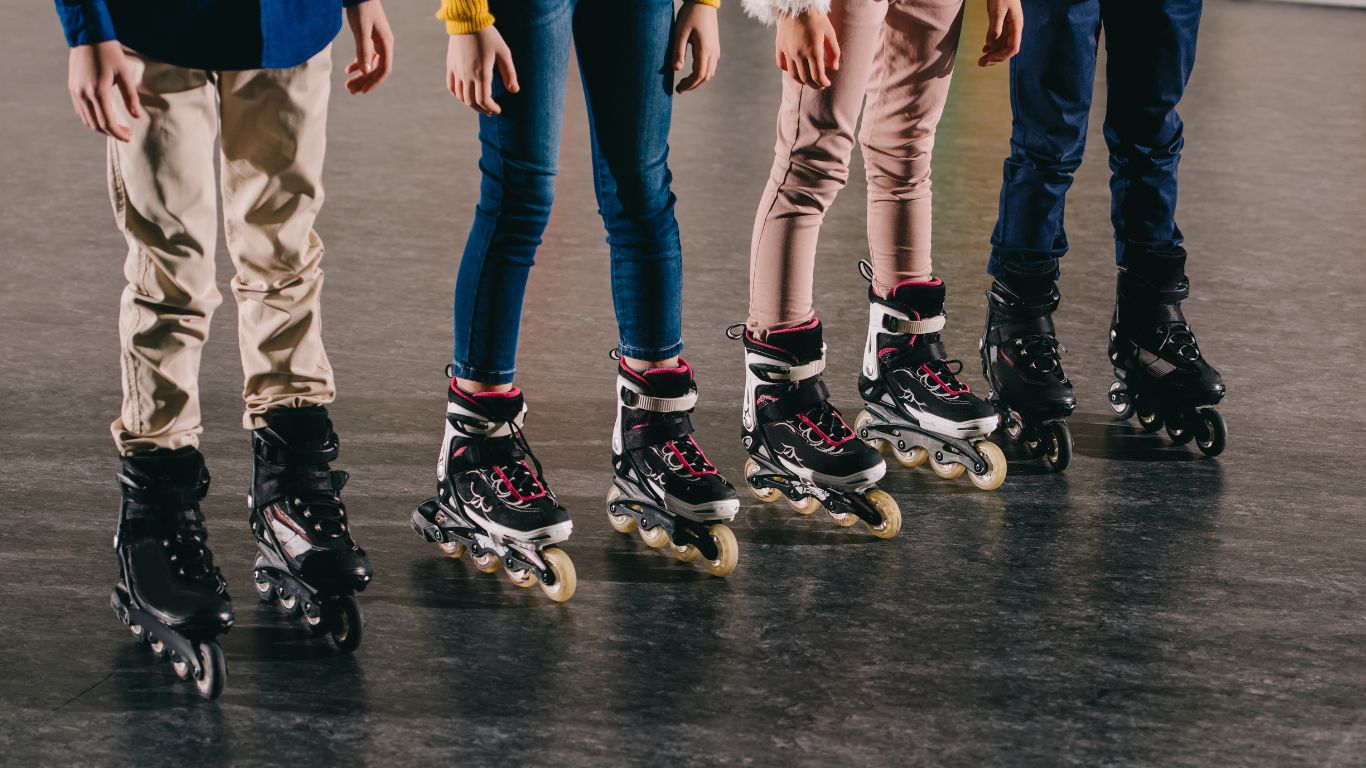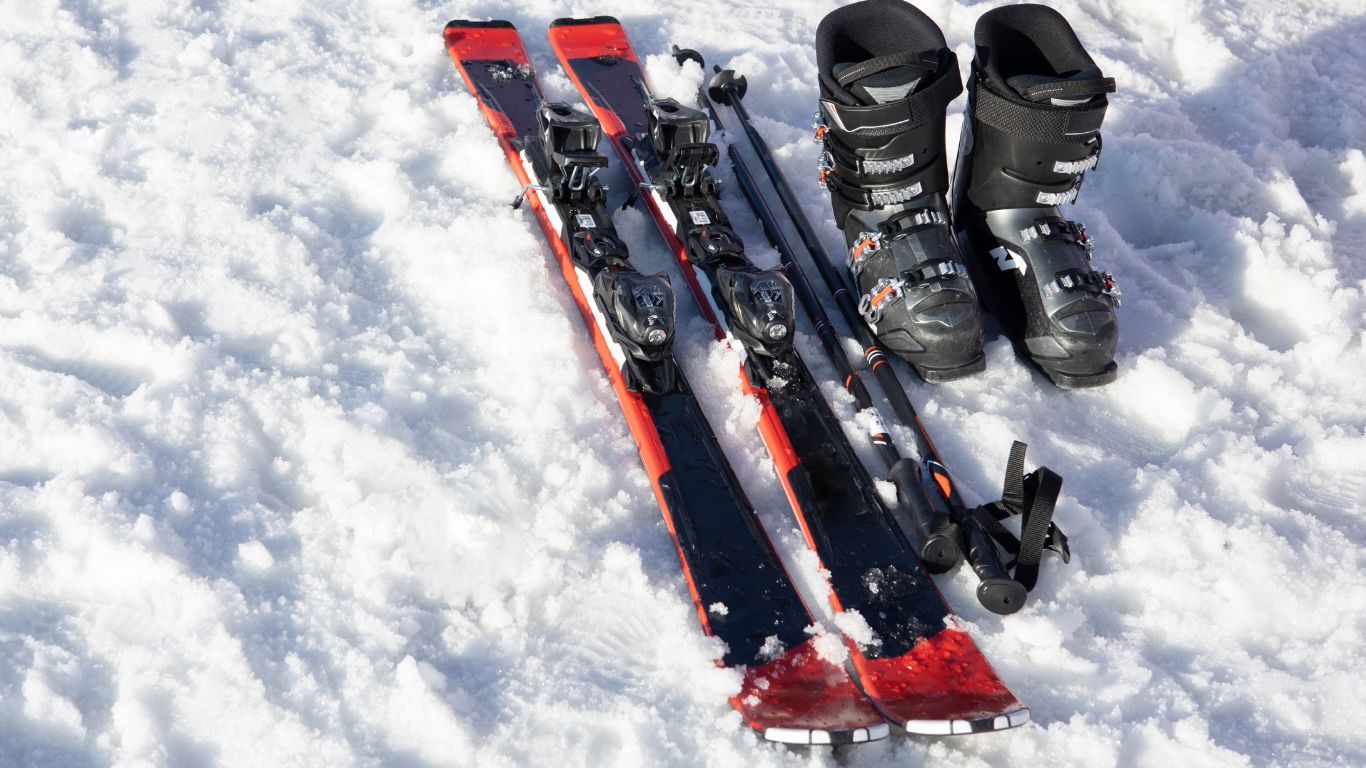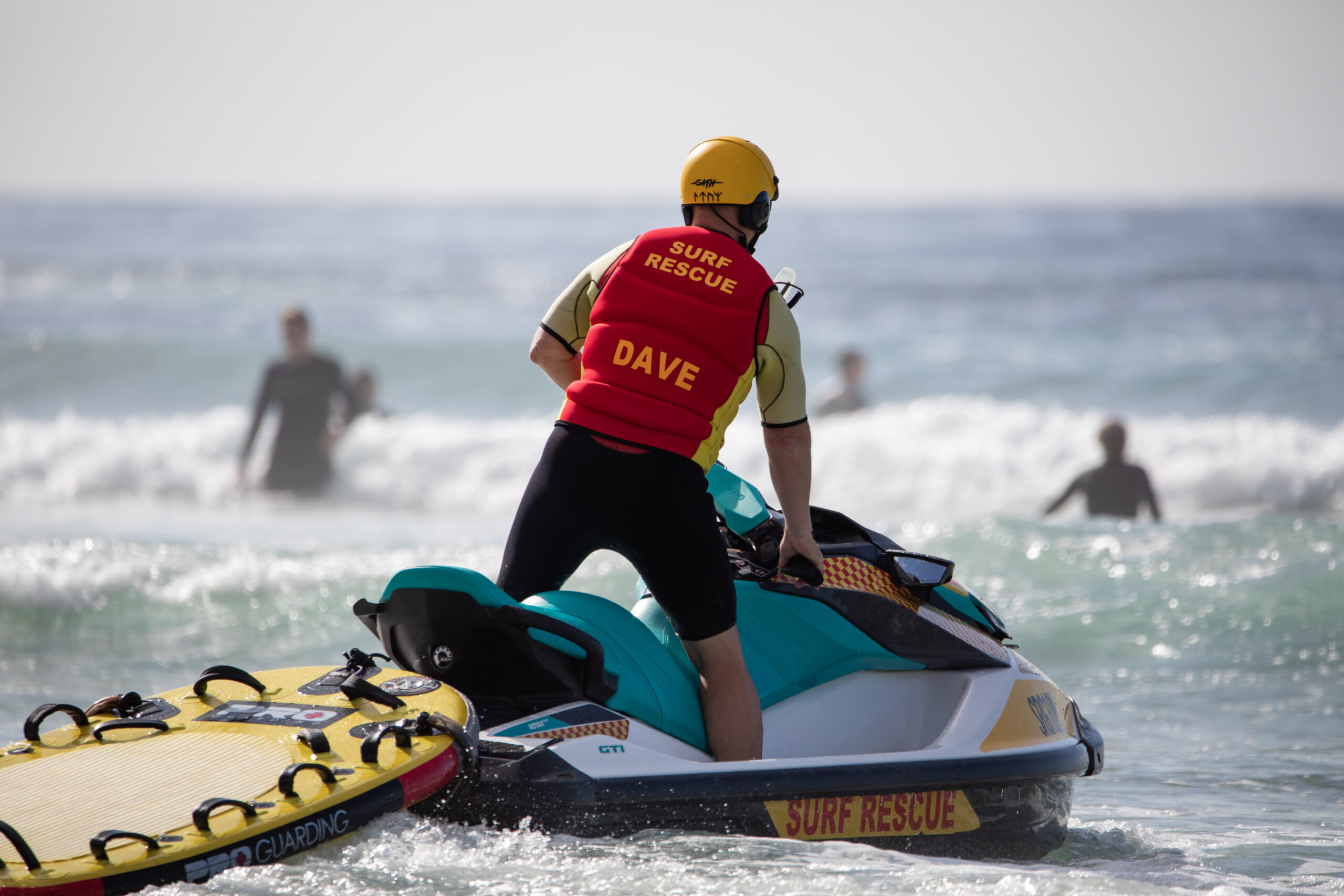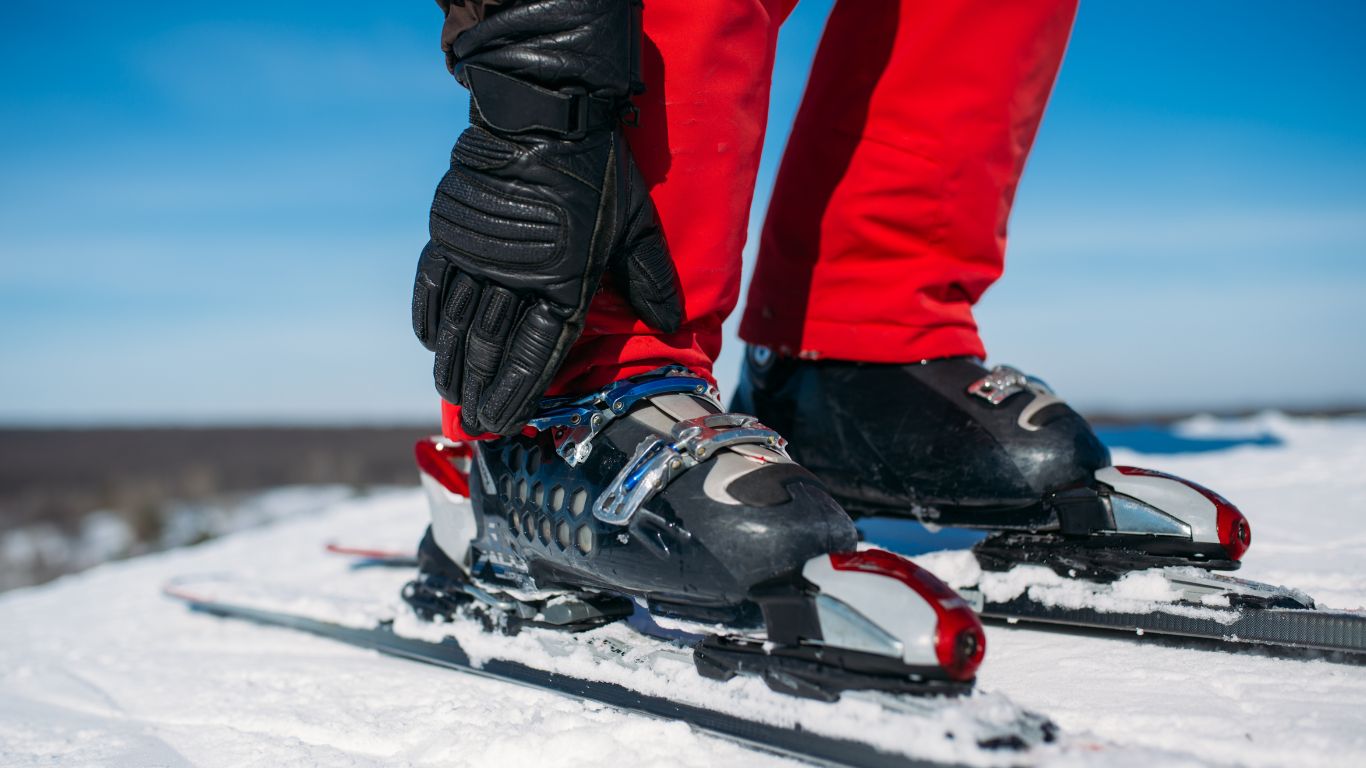Roller skating is a fun and exciting way to stay active and enjoy time outdoors. After 35 years of skating and teaching people how to rollerskate, it is most definitely the reality of strapping wheels to your adult feet, which is often an unexpected and unwelcome shock for the complete beginner. If you don’t learn the foundations properly right from the start, you’ll soon realize how easy it is to fall over. Whether you’re a beginner looking to understand the basics or a more experienced skater wanting to improve your skills, there are plenty of tips and tricks to help you glide smoothly on wheels. In this article, we will explore the fundamentals of roller skating, from choosing the right equipment to mastering techniques like turning and stopping.
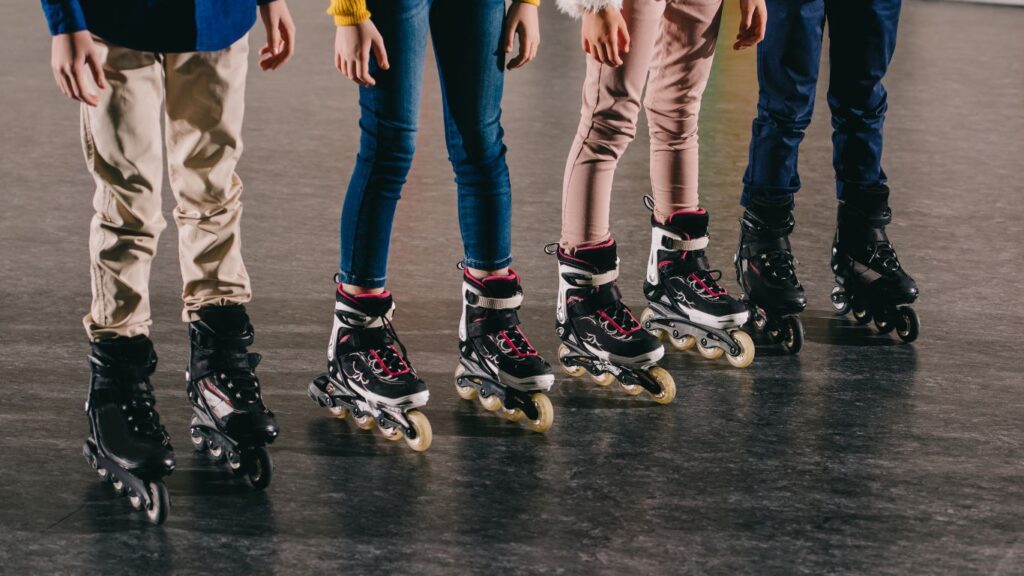
Learning how to roller skate can be a rewarding experience, but it also requires patience and practice. By breaking down the process into manageable steps and focusing on building your confidence in skates, you can progress at your own pace and enjoy the journey of becoming a proficient skater. With some guidance and a positive attitude, you can soon be skating confidently around the park or rink, impressing your friends and family with your newfound skills on wheels.
Choosing the right roller skates for you
Roller skating is a fun and exhilarating activity that people of all ages can enjoy. Whether you’re a beginner or a seasoned skater, choosing the right roller skates is essential to have a safe and enjoyable skating experience.
First and foremost, it’s essential to consider the type of roller skating you’ll be doing. There are two main types of roller skates: quad skates and inline skates. Quad skates have four wheels arranged in a square configuration, while inline skates have a single line of wheels. Quad skates are popular for recreational skating and roller derby, while inline skates are commonly used for speed skating and aggressive skating.
Next, you should consider the fit and size of your roller skates. It’s crucial to choose skates that are comfortable and provide good ankle support to prevent injuries. Make sure to measure your foot size accurately, and refer to the manufacturer’s sizing chart to find the right size for you. Keep in mind that different brands may have slightly different sizing, so try on the skates before purchasing.
The material and construction of the roller skates are also essential factors to consider. Leather skates are durable and provide good ankle support, but they can be heavier and less breathable than synthetic materials. On the other hand, synthetic skates are often more lightweight and breathable, but they may offer less support than leather skates. Choose a material that suits your skating style and comfort preferences.
Another factor to consider when choosing roller skates is the type of wheels and bearings. Wheels come in different sizes and hardness levels, which affect the speed and grip of the skates. Harder wheels are faster and more suitable for smooth surfaces, while softer wheels provide better grip and control on rough surfaces. Bearings are also crucial for the smoothness and speed of your skates, so make sure to choose bearings that are of good quality and suitable for your skating needs.
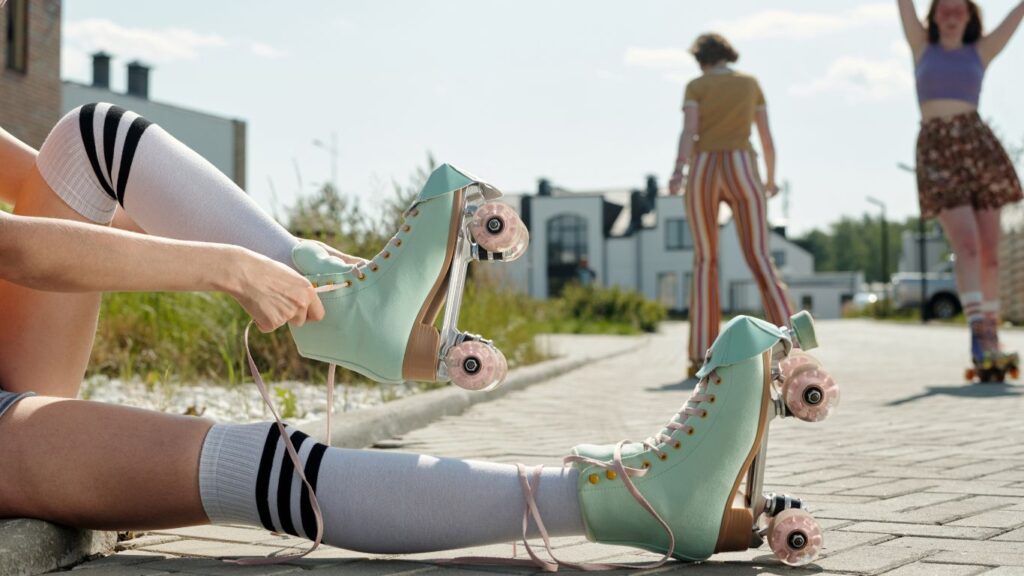
Lastly, remember safety gear when choosing roller skates. Wearing protective gear such as helmets, knee pads, elbow pads, and wrist guards is essential to prevent injuries while skating. Make sure to choose safety gear that fits properly and provides adequate protection for your body.
Learning the basics of roller skating
Roller skating is a fun and exciting way to stay active and enjoy the outdoors. Whether you’re a total beginner or looking to brush up on your skills, learning the basics of roller skating is essential to ensure a safe and enjoyable experience.
The first step in learning how to roller skate is to make sure you have the right equipment. Make sure you have a pair of properly fitted roller skates that offer good support and are in good condition. It’s also essential to wear protective gear, such as knee pads, elbow pads, wrist guards, and a helmet to prevent injuries.
Once you have your equipment ready, find a smooth and flat surface to practice on. A skating rink or an empty parking lot are great places to start. Remember to start slowly and gradually build up your speed and confidence.
When you first start roller skating, it’s essential to get comfortable standing on your skates. Start by putting one foot in front of the other and bending your knees slightly. Keep your feet parallel and shoulder-width apart for better balance. Practicing this basic stance will help you feel more stable on your skates.
Next, practice gliding and rolling on your skates. Push off with one foot while keeping the other foot on the ground for balance. Transfer your weight from one foot to the other to propel yourself forward. Remember to save your arms out to the sides to help with balance. As you get more comfortable, try lifting both feet off the ground and gliding on both skates.
Learning how to stop is an essential skill in roller skating. There are several ways to prevent this, including the T-stop, plow stop, and heel brake. The T-stop involves dragging one foot behind you in a T-shape to slow down. The plow stop requires widening your stance and turning your toes inward to come to a halt. The heel brake is a built-in brake found on some roller skates that you can use to slow down by pressing your heel down.
As you become more confident on your skates, practice turning and maneuvering. Lean your body in the direction you want to go and use your toes and heels to steer. Remember to keep your movements smooth and controlled to maintain balance.
It’s essential to stay relaxed and have fun while roller skating. Don’t get discouraged if you fall or make mistakes – it’s all part of the learning process. Take breaks when needed and listen to your body. Roller skating can be physically demanding, so make sure to stay hydrated and take breaks when you feel tired.
Finally, practice makes perfect when it comes to roller skating. The more you practice, the more comfortable and confident you’ll become on your skates. Set goals for yourself and gradually challenge yourself to try new tricks and techniques. With time and persistence, you’ll be gliding and rolling like a pro in no time.
Learning the basics of roller skating takes time and practice, but with dedication and patience, you’ll be cruising around with ease. Remember to stay safe, have fun, and enjoy the freedom that roller skating brings. So lace up your skates, hit the rink, and start rolling!
Improving your balance and coordination
Roller skating is a fun and exciting way to stay active and enjoy the outdoors. Two of the critical skills needed to be successful at roller skating are good balance and coordination. Improving your balance and coordination will not only help you stay on your feet while skating but also allow you to perform more advanced tricks and maneuvers.
One way to improve your balance while roller skating is to start by practicing on flat, smooth surfaces. This will help you get a feel for the motion of skating and allow you to focus on maintaining your balance without having to worry about navigating uneven terrain. As you become more comfortable on flat ground, you can gradually start incorporating slight inclines and more challenging surfaces into your practice routine.
Another critical aspect of improving your balance while roller skating is developing strong core muscles. Your core muscles play a crucial role in helping you maintain your balance while skating, so incorporating core-strengthening exercises into your regular workout routine can be highly beneficial. Exercises such as planks, Russian twists, and bicycle crunches are great options for targeting your core muscles and improving your overall balance.
In addition to working on your core strength, practicing balance exercises off skates can also help improve your balance while roller skating. Standing on one leg, walking heel to toe in a straight line, and practicing yoga poses that require balance are all great ways to enhance your coordination and stability. By incorporating these exercises into your daily routine, you can gradually improve your balance and coordination, making it easier to stay upright while skating.
Another critical component of improving your balance and coordination while roller skating is focusing on your posture. Maintaining proper posture while skating can help you distribute your weight more evenly and reduce your risk of falling. Keep your knees slightly bent, your back straight, and your head up while skating to help improve your balance and stability on the rink.
Furthermore, practicing stopping and turning techniques can also help enhance your balance and coordination while roller skating. Learning how to stop quickly and safely, as well as how to execute sharp turns and spins, can help you better navigate the rink and avoid accidents. Practicing these techniques regularly can improve your reaction time and coordination, making you a more confident and skilled roller skater.
Overall, you are improving your balance and coordination while roller skating, which takes time and practice. By focusing on developing strong core muscles, practicing balance exercises off skates, maintaining proper posture, and honing stopping and turning techniques, you can gradually enhance your skills and become a more proficient roller skater. Remember to be patient with yourself and stay dedicated to your practice routine, and you’ll be gliding around the rink with ease in no time.
Mastering different roller skating tricks
Roller skating is not just about gliding effortlessly on the rink or the streets. It offers a whole world of tricks and techniques that can take your skating skills to the next level. Whether you’re a beginner or a seasoned skater, mastering different roller skating tricks can be both challenging and rewarding.
One of the most basic tricks in roller skating is the bunny hop. This trick involves using your legs to jump and lift off the ground while skating. To perform a bunny hop:
- Start by gaining some momentum and then bending your knees to crouch down.
- As you push off the ground with your legs, use your arms to help propel yourself into the air.
- Land softly on your skates and continue skating as usual.
With practice, you can improve the height and distance of your bunny hops.
Another famous trick in roller skating is the 180 spin. This trick involves rotating your body and skates 180 degrees while moving forward. To perform a 180 spin, start by skating at a moderate speed and then shift your weight to one side. Use your arms to help you pivot and turn your body in the direction you want to spin. As you complete the rotation, make sure to land with your feet facing forward and continue skating in the opposite direction. With practice, you can master the fluidity and control needed to execute smooth 180 spins.
For those looking to add some flair to their roller skating repertoire, the toe spin is a fun and challenging trick to master. This trick involves balancing on the front wheels of your skates while spinning in a circular motion. To perform a toe spin:
- Start by gradually shifting your weight forward onto the front wheels of your skates.
- Use your arms to help you balance and maintain your momentum as you begin spinning.
- Keep your core engaged and your gaze fixed ahead to help you stay stable.
With practice, you can improve your balance and coordination to execute longer and more controlled toe spins.
If you’re feeling adventurous and want to push your limits, the backslide is a trick that can add an extra level of excitement to your roller skating routine. This trick involves sliding on one foot while skating backward. To perform a backslide:
- Start by positioning one foot slightly behind the other and applying pressure to the back wheels of your skate.
- Lean back slightly and shift your weight onto the foot that is sliding.
- Use your arms to help you maintain balance and control as you glide smoothly backward.
With practice, you can increase the speed and distance of your backslides while maintaining stability and control.
Mastering different roller skating tricks requires patience, practice, and dedication. By starting with the basics and gradually progressing to more advanced techniques, you can improve your skills and confidence in skates. Whether you’re looking to impress your friends at the rink or challenge yourself to try something new, incorporating tricks into your roller skating routine can enhance your overall skating experience. So, lace up your skates, hit the rink, and start mastering those tricks today!
Staying safe while roller skating
Roller skating is a fun and exciting activity, but it’s essential to prioritize safety when hitting the rink or the streets. Whether you’re a beginner or a seasoned skater, following some essential safety tips can help you avoid accidents and injuries while enjoying your time on wheels.
First and foremost, it’s essential to wear the proper protective gear. This includes a properly fitting helmet to protect your head in case of a fall or collision. Wrist guards, elbow pads, and knee pads are also crucial for protecting your joints and preventing injuries. Even if you’re confident in your skating abilities, accidents can happen unexpectedly, so it’s better to be safe than sorry.
When choosing your roller skates, make sure they fit well and provide proper support for your ankles. Ill-fitting skates can not only be uncomfortable but also increase your risk of falling and getting injured. It’s also a good idea to check your skates regularly for any signs of wear and tear, such as loose wheels or broken laces, and replace them as needed to ensure they’re in good working condition.
Before you start skating, take some time to warm up and stretch your muscles. Skating can be a physically demanding activity, so it’s essential to loosen up your muscles to prevent strains and injuries. Starting with some light stretching exercises can help prepare your body for the movements required while skating and reduce the risk of cramps or muscle soreness.
When you’re on the rink or the streets, always be aware of your surroundings and watch out for potential hazards. Keep an eye out for uneven surfaces, debris, or other obstacles that could cause you to trip or lose your balance. Avoid skating in areas with heavy traffic or crowded spaces where you might run into other skaters or pedestrians. And remember to follow the rules of the road or the skating rink, including staying in your lane and yielding to others when necessary.
If you’re skating outdoors, make sure to choose well-lit areas with smooth and flat surfaces to minimize the risk of accidents. Skating at night can be especially dangerous due to reduced visibility, so wearing reflective clothing or accessories and using lights or reflective tape on your skates can help others see you more easily. And always skate in the direction of traffic to avoid collisions with oncoming vehicles or cyclists.
If you’re skating with others, communicate with them clearly and use hand signals or verbal cues to indicate your movements. Avoid sudden stops or changes in direction that could catch others off guard and lead to accidents. And always give the right of way to children, elderly individuals, or less experienced skaters who may need more space or time to maneuver safely.
Finally, listen to your body and know your limits. Refrain from pushing yourself too hard or attempting tricks or maneuvers beyond your skill level, as this can increase your risk of falling and getting hurt. Take breaks when needed, stay hydrated, and rest if you start feeling tired or fatigued. And most importantly, have fun and enjoy the thrill of roller skating while staying safe and injury-free.
Frequently Asked Questions
1. How do I choose the right pair of roller skates?
Choosing the right pair of roller skates is essential for your comfort and skill level. Make sure to consider factors such as your foot size, skating style, and budget when shopping for roller skates. It is also helpful to try on skates before purchasing them to ensure a proper fit.
2. How do I maintain my roller skates?
Maintaining your roller skates is crucial to prolong their lifespan and ensure optimal performance. Regularly check for any signs of wear and tear, clean your bearings, and tighten any loose screws. It is also essential to store your skates in a cool and dry place to prevent rust.
3. What safety gear should I wear when roller skating?
Safety should always be a top priority when roller skating. Make sure to wear a helmet, knee pads, elbow pads, and wrist guards to protect yourself from injuries. Additionally, wearing proper footwear and clothing can also help improve your overall skating experience.
4. How can I improve my balance and coordination while roller skating?
You are improving your balance and coordination, while roller skating takes practice and patience. Start by practicing basic skating techniques such as gliding, turning, and stopping. Focus on maintaining a bent knee position and using your arms for balance. Taking lessons or watching tutorials online can also help improve your skills.
5. What are some tips for skating outdoors?
Skating outdoors can be a different experience compared to skating indoors. Make sure to choose a smooth and flat surface to skate on, avoid uneven terrain, and watch out for obstacles such as rocks or branches. Additionally, always be mindful of your surroundings and other people sharing the space.
6. How can I prevent blisters while roller skating?
Blisters are a common issue for roller skaters, especially beginners. To prevent blisters, make sure to wear thick socks that provide cushioning and moisture-wicking properties. It is also helpful to properly break in your skates and use blister pads or moleskin for added protection.
7. What are some common mistakes to avoid while roller skating?
Some common mistakes to avoid while roller skating include leaning too far forward, not bending your knees enough, and neglecting proper safety gear. To prevent accidents, it is also essential to avoid skating too fast or attempting tricks beyond your skill level.
8. How can I build up my endurance for longer skating sessions?
Building up your endurance for longer skating sessions takes time and practice. Start by gradually increasing the duration and intensity of your skating sessions, incorporating rest breaks as needed. Focus on improving your cardiovascular fitness, strength, and flexibility to enhance your skating endurance.
9. What are some fun roller skating games to play with friends?
There are many fun roller skating games that you can play with friends to keep things exciting and challenging. Some popular games include roller derby, limbo skating, and skate races. You can also create your games or challenges to make skating more enjoyable for everyone.
10. How do I overcome fear and gain confidence while roller skating?
Overcoming fear and gaining confidence while roller skating is a common struggle for many skaters. Start by practicing in a safe and controlled environment, gradually increasing the difficulty level.
Conclusion
Roller skating can be a fun and exciting way to stay active and enjoy the great outdoors. By following these tips and practicing regularly, you can improve your skills and become a confident roller skater in no time. Remember always to wear protective gear and skate safely to prevent any injuries. So lace up those skates and get ready to glide like a pro!





